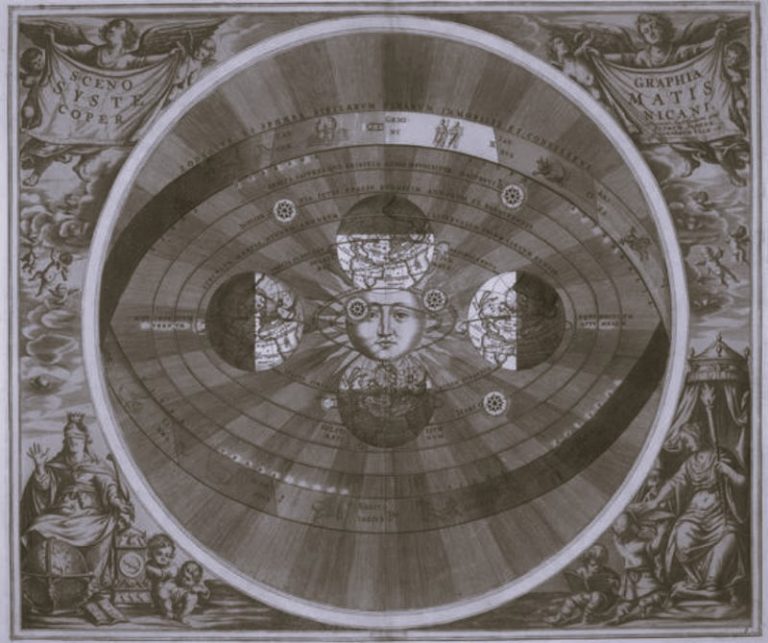


By Dr. Gregory S. Aldrete
Frankenthal Professor of History and Humanistic Studies
University of Wisconsin-Green Bay
These graffiti opened a window into how the city of Pompeii was operated. Equally popular were graffiti that were simply personal comments or remarks. Let’s learn more about the political and personal graffiti of Pompeii.
Political Campaign Graffiti
Over 1,500 instances of graffiti concerning political campaigns have been found at Pompeii, and these offer a glimpse into the workings of Roman politics at the local level. Candidates or their backers would hire someone like Aemilius Celer, who was a professional graffiti writer or sign painter, to cover the walls with slogans praising a candidate’s virtues or urging the citizens to vote for him:
If honest living is thought to be any recommendation, then Lucretius Fronto is worthy of being elected.
One sign promises that, if put in office, one candidate will safeguard the treasury, while another written by a practical-minded person urges:
Elect Gaius Julius Polybius to the office of aedile. He provides good bread.
Some election slogans target specific groups:
Innkeepers, make Sallustius Capito aedile.
Some graffiti offers personal recommendations of candidates, such as “Magonius supports Cuspius Pansa for aedile,” or “The neighbors of Marcus Lucretius Fronto urge you to elect him to the office of aedile.”
The most common type of electoral graffiti, however, expressed the endorsement of candidates by special interest groups. Frequently, these were associations composed of people who shared the same profession:
“The chicken vendors request that you elect Epidius and Suettius as duovirs,” and “All the mule drivers request that you elect Gaius Julius Polybius to the office of duovir.”
Among groups expressing various political opinions were the fruit-vendors, grape-pickers, fishermen, farmers, goldsmiths, carpenters, cloth dyers, fullers, perfume-makers, millers, bakers, barbers, and porters. There is also one endorsement of a candidate by the members of a religious cult:
“As a group, the worshippers of Isis demand the election of Gnaeus Helvius Sabinus as aedile.”
Electoral Graffiti Strategies
Pompeii’s electoral graffiti even provides a glimpse of the dirty tactics that some politicians might employ. One strategy was to slander your opponent by putting up graffiti that appeared to offer endorsements of him by undesirable groups.
The enemies of a man named Vatia seem to have been particularly fond of this tactic; they painted a number of such notices, including:
“The petty thieves ask you to elect Vatia as aedile,” and “The late sleepers ask you to elect Vatia as aedile,” and also, “All the drunkards ask you to elect Marcus Cerrinius Vatia aedile.”
Other Graffiti for the General Public
Another type of message aimed at the general public was lost-and-found notices. One reads:
A copper pot was stolen from this shop. I will give a reward of 65 sesterces for its return and a reward of 20 sesterces for information that leads to its recovery.
Others memorialize household events:
A daughter was born to us early on the evening of Saturday, August 2.
A perhaps satirical variant on this type of message records another type of birth:
On October 17, Puteolana [a dog] had a litter of three males and two females.
Some homeowners put warnings on their walls, such as ‘Burglars beware‘ and ‘Do not loiter here. Move along, idlers’. From such inscriptions, we get a sense of the activities and concerns of ordinary ancient Pompeians and a glimpse at the kind of everyday history that was rarely included in the narratives written by Roman elites.
Learn more about the ordinary Roman.
Personal Graffiti in Pompeii
While much of Pompeii’s graffiti were announcements, advertisements, information, and endorsements aimed at the general public, like today, a substantial proportion simply represented the spontaneous and often highly personal comments of individuals.
This is a transcript from the video series The Roman Empire: From Augustus to the Fall of Rome. Watch it now, on The Great Courses Plus.
There are numerous variations on the timeless theme of ‘so-and-so was here,’ such as ‘Aufidius was here’, and the very specific declaration that ‘Gaius Pumidius Diplius was here on October 3′.

Bored idlers amused themselves by scratching messages on the walls, such as ‘On April 19 I baked bread’, or ‘Publius Comicius Restitutus stood here with his brother’. Lonely travelers recorded their feelings on the walls, as in a graffito written on the walls of an inn that reads:
Vibius Restitutus slept here alone with his heart filled with longing for his Urbana.
One vast subcategory of graffiti tells of success or failure at love:
“Marcus loves Spendusa”; “Thyas, don’t give your love to Fortunatus”; “Atimetus got me pregnant”; “I’ve had sex with many girls here”; and “I came here. I had sex. I returned home.”
One interesting series of graffiti scratched on the doorposts of a tavern seems to record an exchange of messages between members of a love triangle. The first declares:
Successus the weaver loves Iris, the slave of the innkeeper’s wife. She doesn’t return his affections, but he tries to make her pity him. So says his rival. Farewell.
It is signed by a man named Severus. Successus then apparently wrote his reply next to the first message:
You are envious and angry, but don’t try to steal from someone who is better-looking than you are, who knows what to do in bed, and who is better endowed than you are.
Severus then added:
Severus to Successus—I have said it and written it: you love Iris, but she doesn’t love you.
Unfortunately, like today, many writers of graffiti used the walls to express—often in vulgar terms—their feelings of resentment or anger, and no small amount of Pompeii’s graffiti consists of short messages like:
“Ampliatus Pedania is a thief”; “Stronnius is an idiot”; “Epaphra is a poor ball-player”; “Serena hates Isidore”; “From Samius to Cornelius: Go hang yourself!”; and “You’re full of crap.”
A somewhat more loquacious but equally hostile writer felt compelled to leave this message:
I despise beggars. Anyone who asks for something for free is a moron. Let him give cash to get what he wants.
Learn more about the burial and tombstone epitaphs from ancient Rome.
Street Philosophers of Pompeii
Finally, the walls offered a forum for the musings of street philosophers. One said ‘When you are dead, you are nothing‘; another, ‘Let he who loves prosper. Let he who loves not, be destroyed. And let he who prevents others from loving be doubly destroyed’.
The wealth of frivolities written on the walls prompted one exasperated reader to add his own comment:
Oh Wall, I am astonished that you have not fallen over and collapsed since you have to bear the weight of so many inane messages.
Learn more about the hazards of life in ancient Rome.
Importance of Pompeii’s Graffiti
Pompeii’s graffiti is exciting to us today because it records the aspirations and feelings of the vast majority of society who were neither wealthy nor powerful. These graffiti have also been especially helpful to historians by providing information about many concrete details of the practical aspects of daily life that do not appear in upper-class sources.
Notices such as the price lists of bars and rental signs can be used by economic historians to get a sense of how many basic necessities cost, and which kinds of items were relatively cheap or expensive. From these, historians can also learn how contracts were written up and negotiated and what sorts of guarantees were demanded by buyers or offered by sellers.
Those interested in re-creating political history have been able to reconstruct particular elections, including the candidates, their key supporters, and important issues, by studying Pompeii’s electoral graffiti.
The pursuit of pleasure is another area of ordinary people’s existence that is brought vividly to life by these writings. Pompeiians plainly enjoyed gambling, following athletic contests and teams, going to the baths, and fine food and drink, and the walls of the city preserve fascinating and highly specific details about each of these activities.
Common Questions About Political and Personal Graffiti of Pompeii
Q: What was the theme of the graffiti in Pompeii?
More than 1,500 instances of political graffiti have been found at Pompeii. These were primarily used to campaign for or against a particular candidate. These graffiti provide us a glimpse into the workings of Roman politics at the local level.Q: Were there any personal exchanges through Pompeii graffiti?
A piece of graffiti, found on the doorposts of a tavern, recorded the exchange of messages between members of a love triangle. Severus wrote the first message, followed by a reply from Successus and a final message from Severus. They were writing about their love for Iris, a barmaid.Q: What language did people in Pompeii speak?
The various political, commercial, and personal graffiti lining the streets of Pompeii suggest that the people of the city primarily spoke Oscan and Greek. There are instances of graffiti in Latin as well as Hebrew, suggesting these were the lesser-used languages in the city.Q: Why is Pompeii so important to historians?
The graffiti preserved in Pompeii due to the volcanic ash from the eruption of Mount Vesuvius has proved to be an essential source of knowledge about ancient Rome. These graffiti have been especially helpful to historians by providing information about many concrete details of the practical aspects of daily life that do not appear in upper-class sources.
Originally published by The Great Courses Daily, 05.06.2020, republished with permission for educational, non-commercial purposes.






